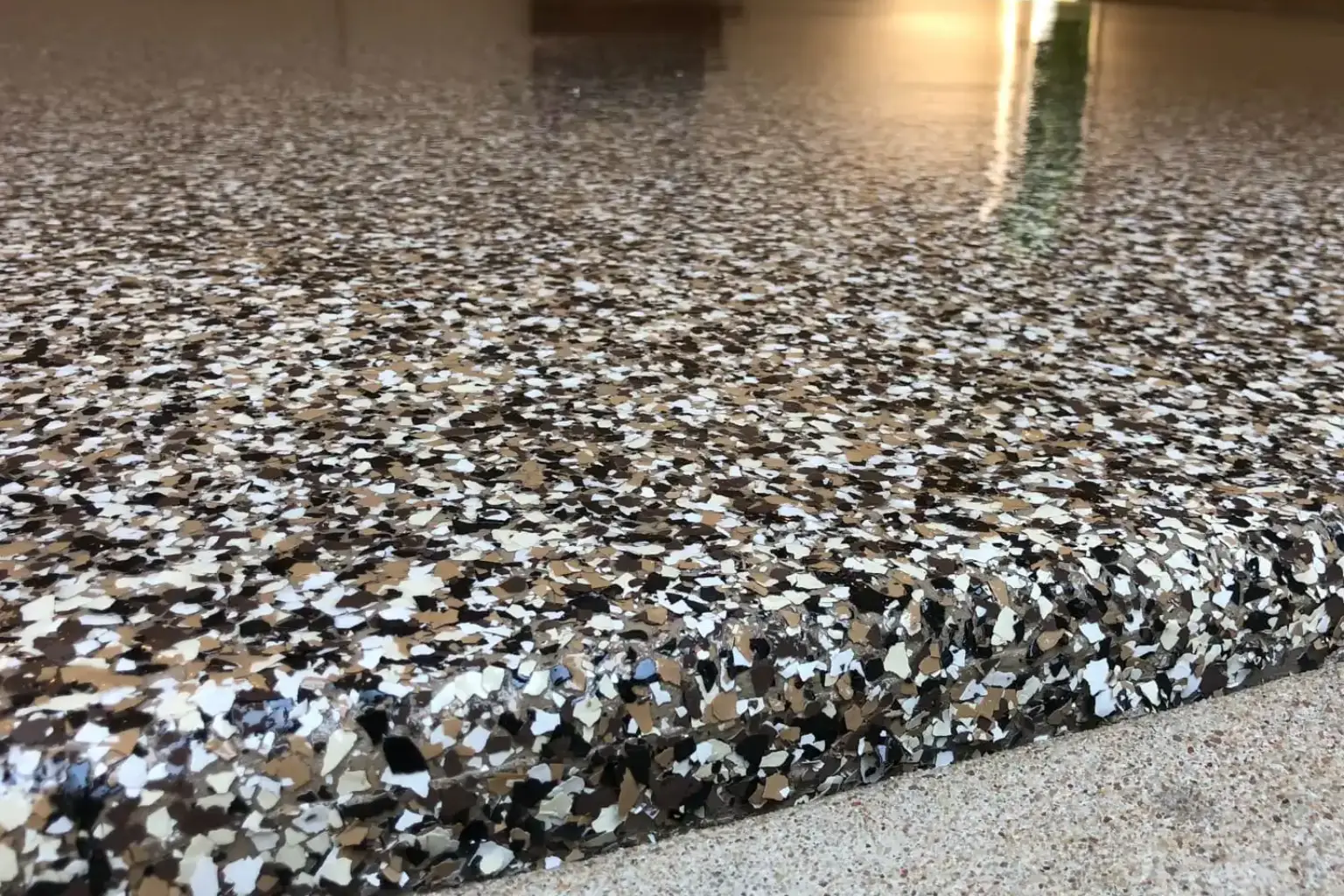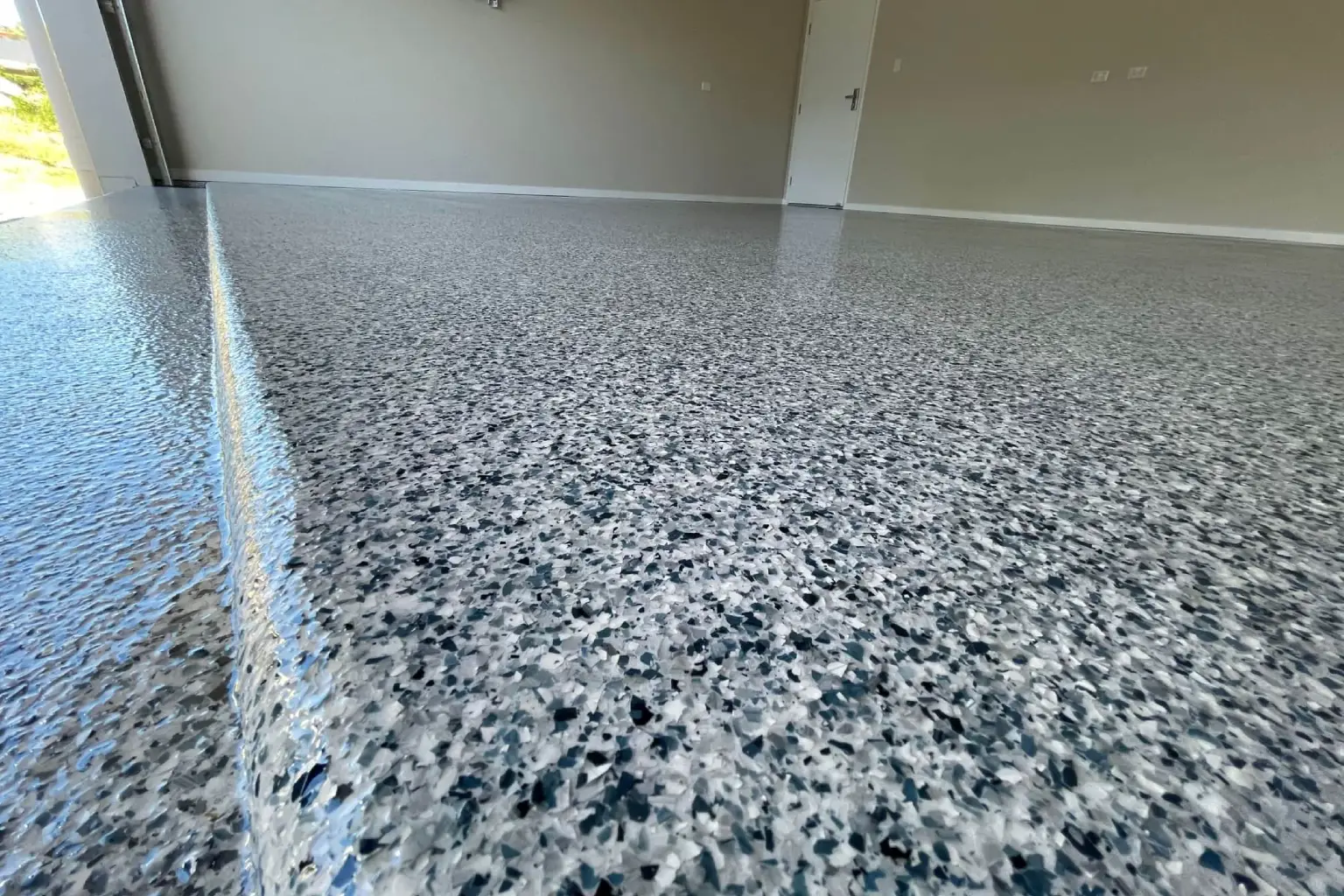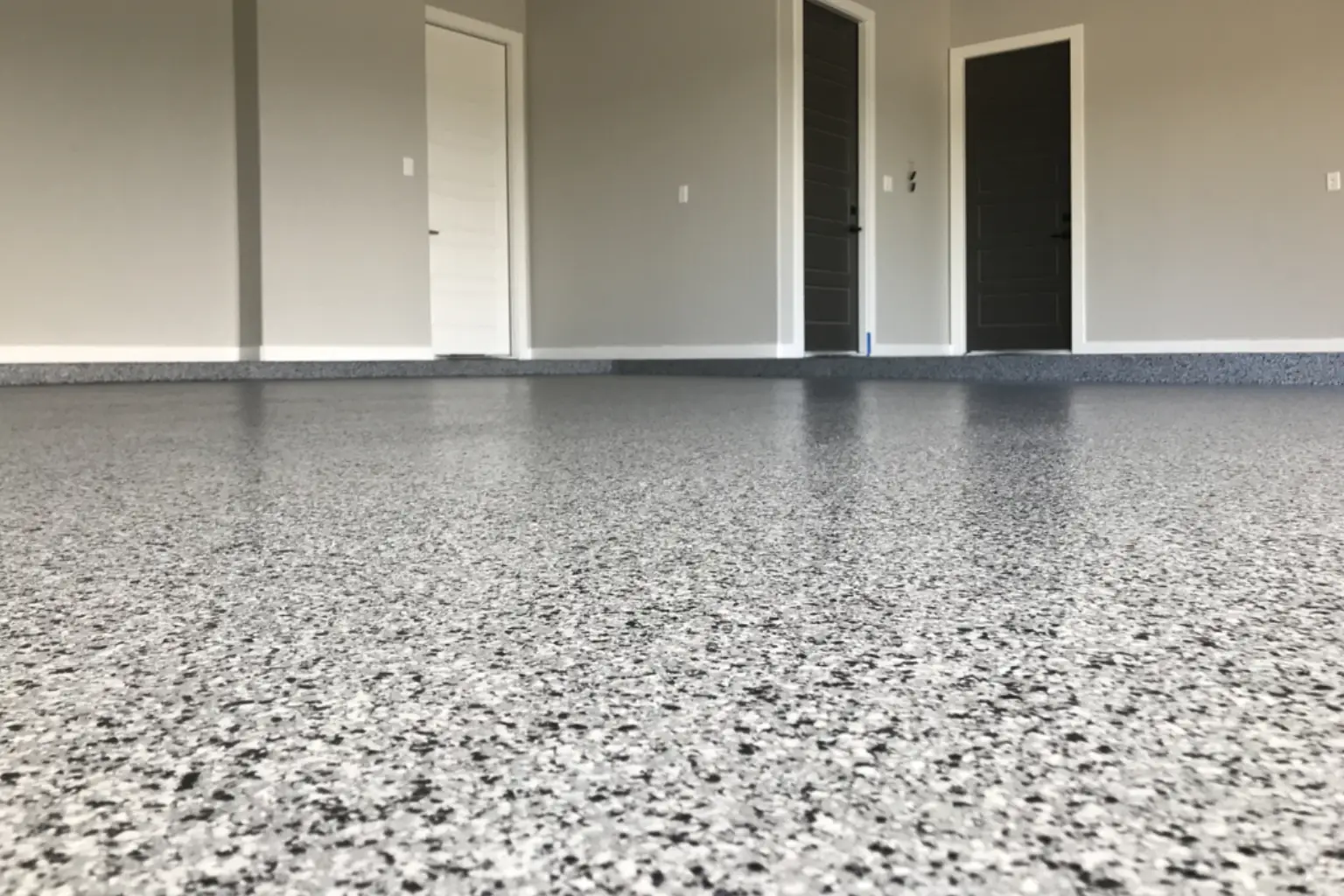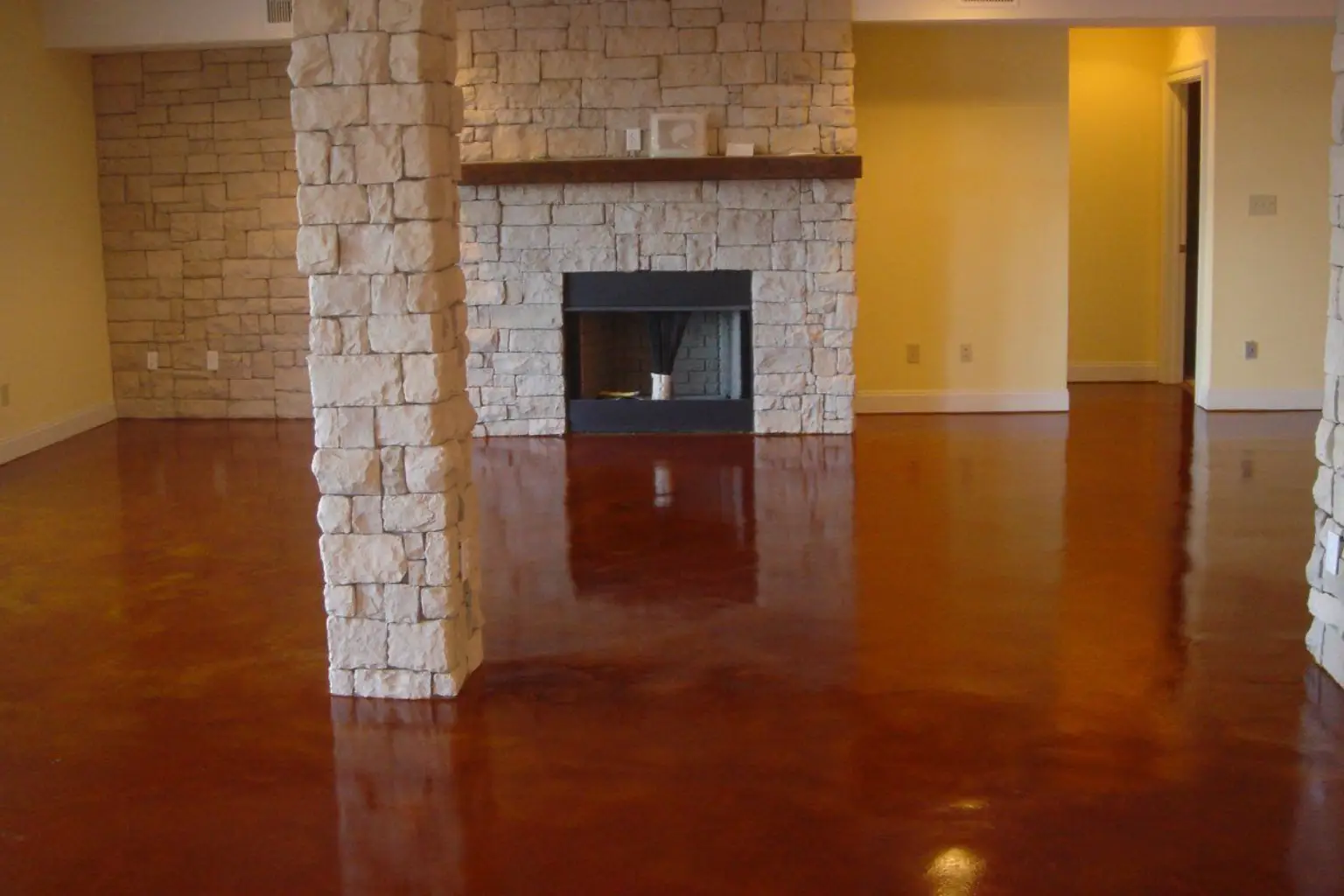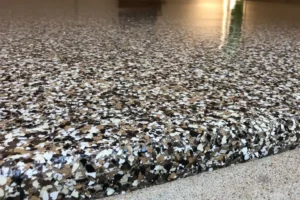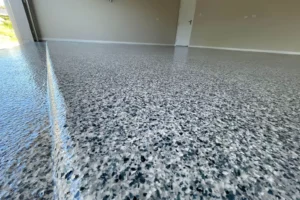All spaces have a story to tell, and the floors often set the stage. Plain gray floors may be solid, but they don’t always contribute elegance or flair to a room. People today are seeking durable options that also incorporate design aesthetics and character into their homes and businesses.
This is where stained concrete floors become important. When stained, they can serve as a design element rather than just something to walk on. Staining concrete can transform a simple slab into a colorful, shiny version of itself. The possibilities are endless, and stain can provide everything from warm, earthy tones to bright, bold modern colors. Staining concrete floors can make any space feel original.
Understanding Concrete Stains
Concrete stains are special colors designed to penetrate the surface, rather than just lying on it like paint. Concrete stains will chemically react with the concrete in order to create rich, durable colors.
The main difference between a painted and a stained concrete floor is how the color remains. Over time, paint may peel or chip. Stained or polished concrete floors will not peel because the stain is now part of the actual surface.
Another benefit is how easy they are to maintain. Concrete stains are durable and low-maintenance, and with Brye A+ Cleaning, simple cleaning is all that’s needed to keep the floor fresh and spotless.
Residential stained concrete floors, especially in homes, are becoming very popular. Homeowners love them for their strength and stylish look. They take a boring slab of concrete and offer some of the coolest, stylish flooring, with something perfect for every home.
Types of Stained Concrete Floors
Stained concrete floors come in two main types: Acid and Water-based stained concrete. Each types come with its own features and benefits:
Acid Stained Concrete Floors
- An acid concrete floor stain consists of a mixture of water, acid, and mineral salts. It seeps into the concrete and produces permanent colors.
- An acid concrete floor stain blends into the surface and changes its color. The process leaves behind unique shades and artistic effects.
- Acid-stained concrete floors often look similar to stone, marble, and even leather.
- Because each floor is naturally unique and the acid stain never reacts the same way twice, it creates a style that is one of a kind for each floor.
- Some popular looks are earthy brown, warm tan, and cool green. The earth tones provide a natural and artistic feel to the floor.
- Acid concrete floor stain looks beautiful in all types of areas, including patios, basements, entryways, and living rooms, to mention a few. They offer both durability and aesthetics.
Water-Based Concrete Stains
Water-based concrete stains are fundamentally different from acid stains. They do not chemically react. They add color by penetrating deep into the surface of the concrete. The finish is smooth and even. They are easier to control than acid stains. The results are also more predictable.
The top advantage of water-based concrete stains is the wide choice of colors they offer. Bright bold colors, muted neutral colors, soft pastels, and everything in between. Homeowners can combine and layer colors to create any unique design they like. This huge selection of colors makes it easy to work in modern spaces, or neutral when needed for traditional.
Water-based stains are also eco-friendly and safe for indoor use. They have very little odor and fewer toxic fumes. Many homeowners prefer to work with water-based stains simply because they are easier to work with, safer for their family, and are stylish and last!
Acid Stain vs. Water-Based Stain Comparison
Deciding on either an acid stain or water-based concrete stains can be something to ponder. Both can add style and durability to your floors, but they have different approaches. By considering color, durability, and cost, it makes it easier to decide which type of stain will work best for your space.
1. Color and Finish
- Acid stain: An acid concrete floor stain changes color through a reaction with the minerals embedded within the concrete. They produce earthy colors like brown, green, and blue, giving the floor a natural look. Since no two floors look the same, each surface is as unique as your design. The finish can look stone-like, marble-like, or even like leather.
- Water-based concrete stains: These stains do not react with the concrete, and they penetrate the surface, leaving a smooth, even layer of color. With water-based stains, you get more color choices. Bold reds, deep blues, soft grays, and light tans are all possible. The finish is smoother and more predictable, which is good if you want a controlled outcome.
2. Cost and Durability
- Acid-stained concrete floors: Acid-stained concrete floors are being chosen because of their durability and resilience. After sealing, you can expect them to last decades with regular care. The acid stains cost a little more because of the reaction process, but most homeowners consider it worth it for the natural look and durability.
- Water-based concrete stains: Water-based stains are more affordable and simpler to apply. Water-based stains are also durable, but you may need to reseal them once in a while to keep your colors bright. Water-based stains are still a good price option.
3. Best Use
- Acid concrete floor stain: Works best in spaces to get a natural or rustic style. Many people use it for patios, basements, and entry ways, organs, because the earthy look fits well with outdoor parapets and traditional styles.
- Water-based concrete stains: Water-based stains are best used indoors when color is considered more important than safety. These stains are great options for living rooms, kitchens, and bedrooms because they come in many colors. Water-based stains also offer families more peace of mind for safety since they produce little odor and fewer fumes.
Factors to Think About When Choosing the Right Stain
- If you prefer earthy and natural tones, you might prefer an acid concrete floor stain. If your goal is bold or modern, water-based concrete stains would be your best choice.
- Acid-stained concrete would be a good choice for an outdoor setting like a patio or entryway. Water-based stains are better for use indoors in a residential setting, since most are low odor.
- An acid-stain floor will require little maintenance once sealed. A water-based concrete stain can require the floor to be resealed at some frequency to keep the colors bright.
Conclusion
Stained concrete floors are a smart way to turn plain concrete into something stylish and lasting. There is a variety of choices for stains and finishes. Go for acid-stained concrete floors if you want earthy and natural shades. Pick water-based concrete stains for bold colors. Stained concrete floors, if installed correctly, in homes or businesses, will add beauty, durability, and ease of maintenance. Get premium stained concrete installation services at Epoxy Shine that ensure durability for long-term use.


